Seeing Double: 8 Fascinating Facts About Twins
Science Times Two
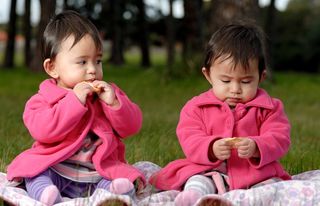
They are often difficult to tell apart and can use this fact to their advantage, tricking everyone from parents to teachers or dates. Besides pulling pranks, twins have a lot to tell us about human nature and even weigh in on the nature-versus-nurture debate. And they don't always look alike, with fraternal twins looking as dissimilar as a brother and sister do. Here's more on the science of twins.
Double Duty

Two to nurse or bottle-feed, two times the dirty diapers to change and two to tote around … double duty is taken to a new level for moms of twins. It turns out having two babies at a time is linked to a longer life for the mama, according to a study published in May 2011 in the journal Proceedings of the Royal Society B. But that's not because the double duty increases a mother's life span. Rather, she is physically stronger to begin with, the researchers found. As such, giving birth to twins may be an evolutionary adaptation in which healthy moms take the opportunity to pass on double their genes in one shot.
Since the study focused on a "natural fertility" population of women in 1800s Utah, the results may not apply in today's world of in vitro fertilization (IVF). [Read full story]
ID'ed by Doggies
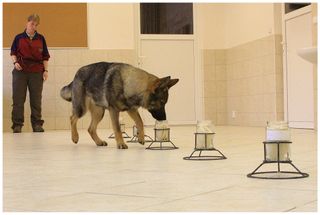
Close friends and even Mom and Dad can be duped by their identical twins, sometimes mistakenly calling one by the other's name. Not the case with some dogs.
Past research on dogs' ability to tell twins apart has proven inconclusive with conflicting results over the years. Scientists in the Czech Republic suggested any discrepancies seen between these results may have been due to different levels of training of the dogs used in each study. And so in their study, they used 10 highly trained police dogs, which went through 12 tests, all of which involved the German shepherds sniffing a swab taken from the bellies of sets of identical and fraternal twins and then finding a matching scent from seven possibilities. The dogs aced the tests, picking out the correct match every time. The researchers, who described their study online June 15, 2011, in the journal PLoS ONE, aren't sure what the dogs are using to ID the twins, but perhaps infections and other outside factors that can change an individual's odor play a role. [Read full story]
Want Twins?
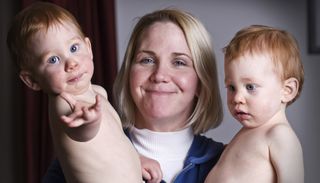
Turns out there are ways to up the chances you'll deliver two bouncing babies. Being tall is one of them. Past research has found that taller women have more of an insulin-like growth factor that has been linked to both height and the rate of twins. In work published in 2006 in the Journal of Reproductive Medicine Dr. Gary Steinman, an obstetrician at Long Island Jewish Medical Center, compared heights of 125 women who had twins and 24 who had triplets to the average height of U.S. women.
Those who birthed two or more children were on average more than an inch taller than other mothers, according to the study published in September 2006 in the Journal of Reproductive Medicine. As a woman ages, she's also more likely than her younger counterparts to have multiple births. A study published in the journal Human Reproduction found that compared with women under 35, women ages 35 and older had higher levels of follicle-stimulating-hormone and were more likely to release more than one egg in a menstrual cycle, according to WebMD. [Read full story]
Finicky Fingerprints

Rather than finding that one facial feature or particular clothing item that distinguishes a twin, you may want to finger gaze. Turns out, identical twins do not have identical fingerprints. That's because genes don't tell the whole story of the ripples covering our fingertips; rather, those ridges are influenced by random stresses experienced in the womb. Even a slightly different umbilical cord length changes your paw print.
Twin Tallies
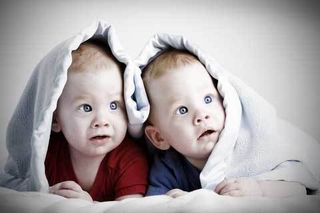
Seeing double gets new meaning in the central African country of Benin, where about 27.9 twins are born for every 1,000 births — the highest national average of twinning. Asia and Latin America have much lower twinning rates of about eight per 1,000 births, according to research published online Sept. 28, 2011, in the journal PLoS ONE.
While scientists aren't certain why there are such differences in twin birth rates among the different regions of the developing world, they suspect most variations are due to the birth rates of fraternal twins. Identical twins seem to occur at a relatively constant rate of 3.5 to 4 per 1,000 births globally. Various factors, including a mother's age, height, activities such as smoking, and whether she inherited any "twin genes," may be the cause of varying fraternal twin birth rates, researchers say.
Good Guinea Pigs
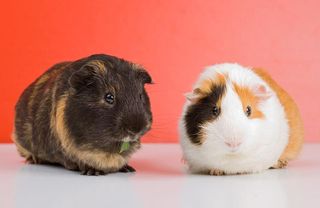
Identical twins don't just look alike on the outside, but they also share some 99.9 percent of each other's genes. That makes them great test subjects for researchers wanting to tease apart genetic factors from environmental ones. For instance, by comparing the aging process in monozygotic and fraternal twins — whose genes are only as similar as any two siblings but who tend to share the same environment — researchers of the Minnesota Twin Study of Adult Development are beginning to understand what causes individual differences in aging. Since the study began in 1986, they've found that our genes influence changes in our personalities and activity levels as we get older, with an active lifestyle contributing to more successful aging.
Wired to Be Social
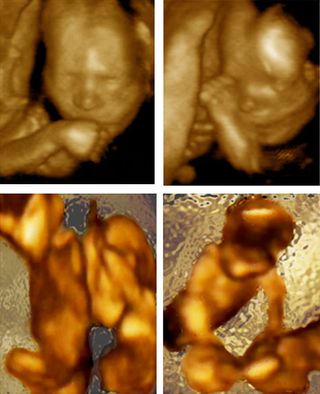
Twins, it seems, are never really alone, even in their mother's womb. Research published online Oct. 7, 2011, suggests that as early as 14 weeks gestation, twins are interacting with each other. The researchers, Umberto Castiello of the University of Padova in Italy and colleagues, studied movements of five pairs of twin fetuses by using four-dimensional ultrasonography at the 14th and 18th weeks of gestation. By 14 weeks, the fetuses were making movements specifically aimed at the co-twin, movements that increased between week 14 and 18.
For instance, in some of the videos a fetus was caressing the back or the head of the co-twin. While self-directed movements, such as hand-to-mouth and hand-to-eyes, decreased between the two tests, other-directed movements increased until they accounted for about 29 percent of observed movements at 18 weeks. (Shown above, self-directed movements toward the mouth and eye, top, and caressing the back and head of the co-twin, bottom.)
"These findings force us to predate the emergence of social behavior: when the context enables it, as in the case of twin fetuses, other-directed actions are not only possible but predominant over self-directed actions," the researchers write online in the journal PLoS ONE.
Run in the Family?

Whether or not you will need to buy double of everything from cribs to car seats, may have more to do with chance than genetics, at least for identical twins. Scientists have yet to find any genes that cause a fertilized egg to split in two — and resulting in monozygotic twins — suggesting identical double trouble is a random occurrence. And if you think just because your mother has a twin sister means there's no chance for Baby A and Baby B in your delivery room, you may want to think again. Research has suggested that genetics is behind a woman's propensity to release more than one egg at a time, which if two of the eggs are fertilized they become fraternal twins.
Even so, counter to conventional wisdom, fraternal twins don't always skip a generation. According to an article in The New York Times, this notion may have to do with the fact that men who inherit this "twin gene" aren't affected by it, but they can pass it onto their daughters who then are more likely to have fraternal twins.
Sign up for the Live Science daily newsletter now
Get the world’s most fascinating discoveries delivered straight to your inbox.
Jeanna Bryner is managing editor of Scientific American. Previously she was editor in chief of Live Science and, prior to that, an editor at Scholastic's Science World magazine. Bryner has an English degree from Salisbury University, a master's degree in biogeochemistry and environmental sciences from the University of Maryland and a graduate science journalism degree from New York University. She has worked as a biologist in Florida, where she monitored wetlands and did field surveys for endangered species, including the gorgeous Florida Scrub Jay. She also received an ocean sciences journalism fellowship from the Woods Hole Oceanographic Institution. She is a firm believer that science is for everyone and that just about everything can be viewed through the lens of science.
